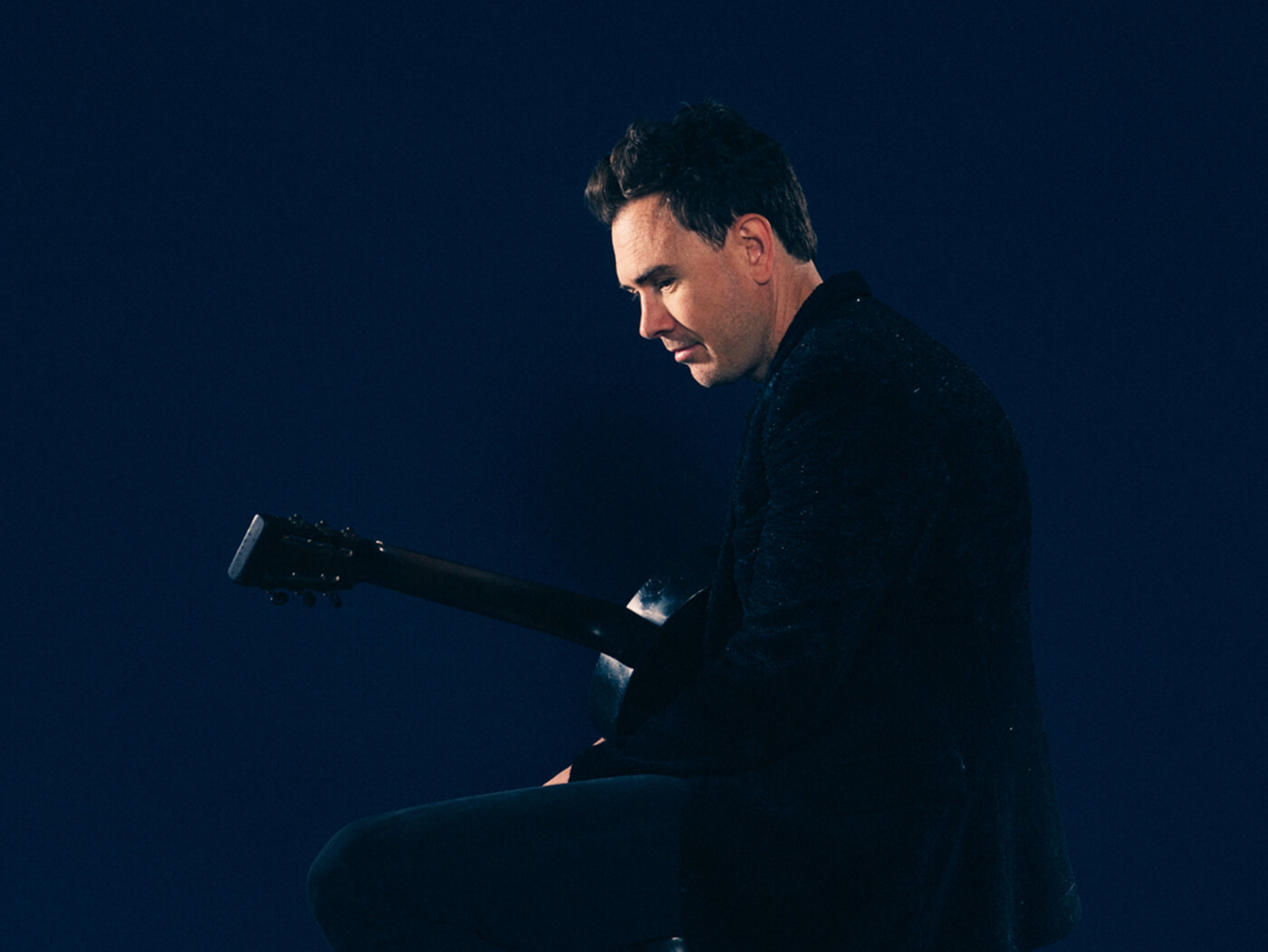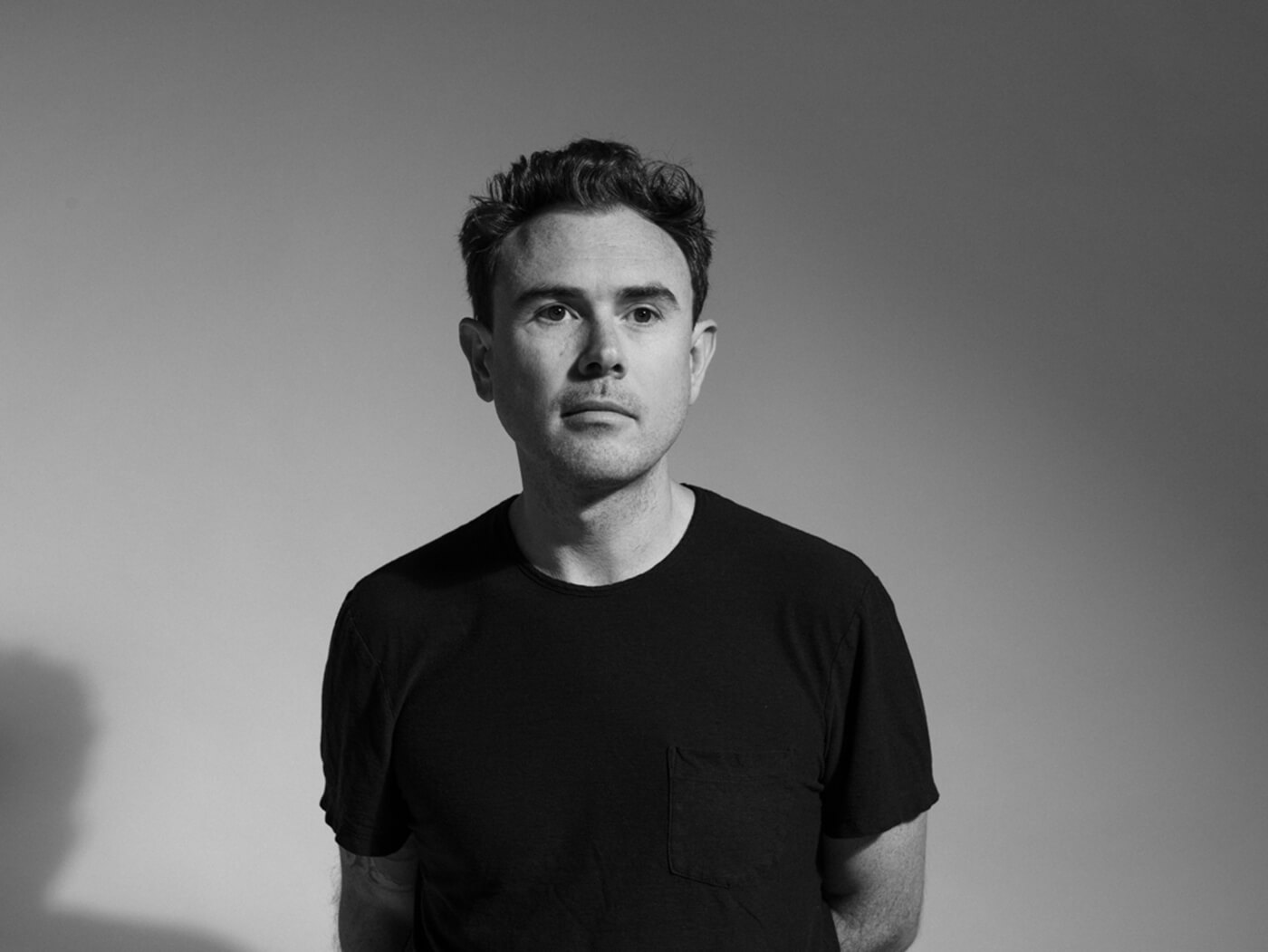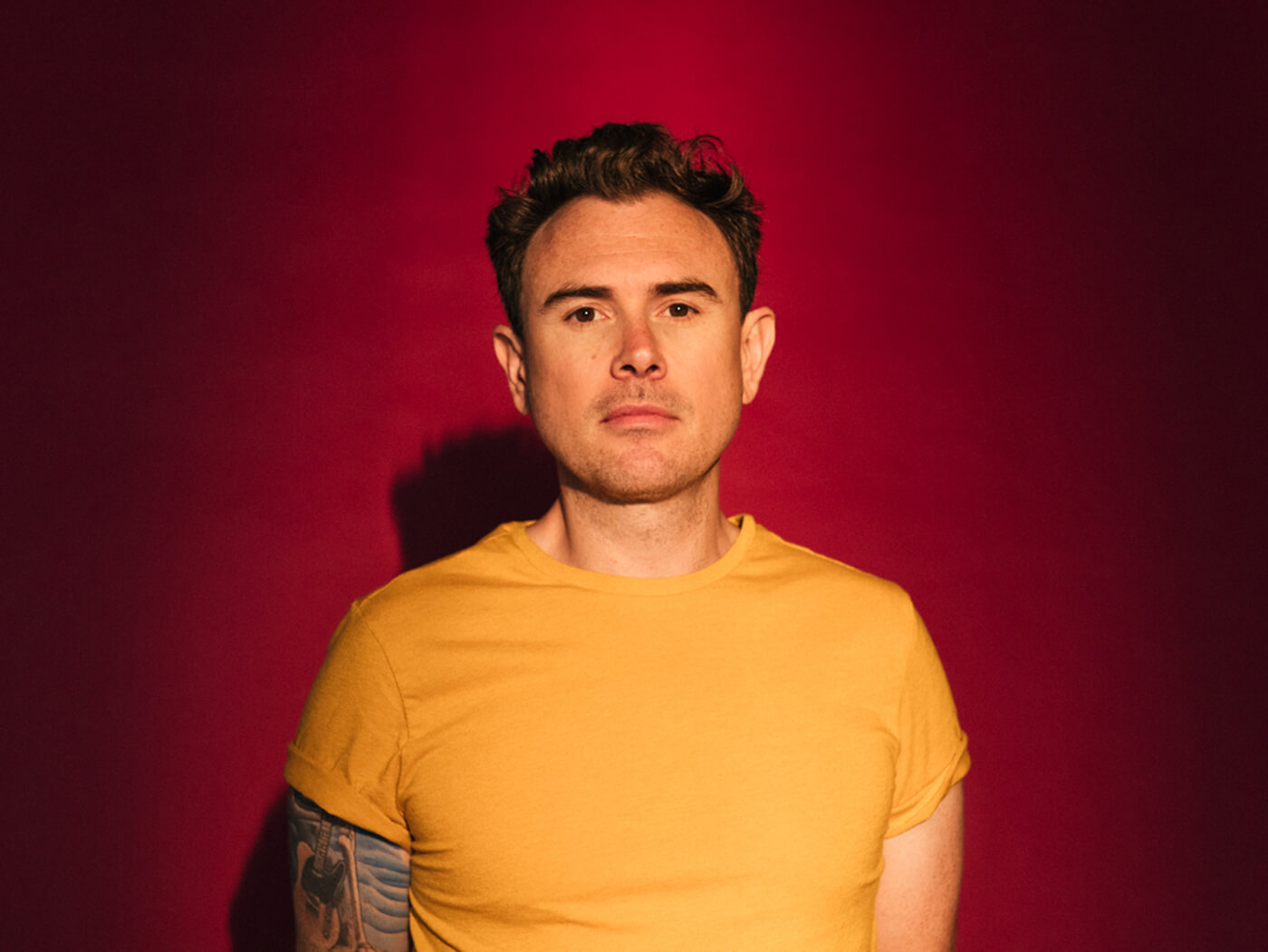“I had an artistic statement to make”: Jedd Hughes steps back into the spotlight
The Aussie guitarist’s upcoming album clears up any preconceived notions about his music.

Image: Libby Danforth
Australian guitarist Jedd Hughes is in an enviable position. He’s played with and for the likes of Emmylou Harris, Keith Urban and Miranda Lambert, and is gearing up for the release of a brand-new album, West. A member of Vince Gill’s band and the opening act on the country star’s current tour, he gets 20 minutes each night to win over an audience with material from his upcoming record. “Right off the bat, people have been receptive,” he tells Guitar.com. “It’s been awesome.”
But it wasn’t easy for Hughes to get here. Originally from Quorn, a small town from Down Under, the guitarist moved to Nashville in 2002 and released his debut album, Transcontinental, on MCA Records. It put him on the music industry’s radar, but after MCA merged with another label, he was left unsigned. A new deal with Capitol Records yielded another album, but it was never released.
Hungry to make his own music, Hughes headed to Los Angeles, but began to struggle with alcohol addiction and depression. After moving back to Nashville and starting on the road to recovery, he began to work on new solo material. The songs have culminated in West, a 10-track record that Hughes sees as an “artistic statement” he had to make.
Read on for his insights on the making of the new record, the merit of starting on acoustic guitars before moving to electric, and what other exciting albums he’s sessioned on lately.
You play guitar, baritone guitar, bass, mandolin and banjo. How did you develop your picking style?
When I was learning to play guitar when I was a kid, I was studying Albert Lee and techniques of country guitar players like Vince. Their picking technique is incredible, and reading articles on those guys led me into flatpicking. I became fascinated with Tony Rice and his right-hand technique. He’s like the Bionic Man – he has this incredible, crazy thumb that does things with a flatpick that no one else can do.
My style came about through phases, starting that way, getting into bluegrass, playing a lot of mandolin when I was in college, flatpicking, and then getting more into rock ’n’ roll guitar players and techniques. That being said, I remember watching some instructional videos when I was a kid. I never sat down and dissected people’s techniques, but I got really fascinated with Daniel Lanois and his ambient guitar playing when I was 16 or 17, and then into Mark Knopfler, and that’s when I realised that you don’t have to always use a flatpick.

I got into figuring out how to play with my fingers. I saw a video of somebody playing, and I watched them with a pick in their hand, and then they put the pick back between their fingers and played with their fingers, and I thought, “That’s for me. If I can figure out how to do that, then I can cover a lot of ground dynamically with my right hand.”
I worked on that, and now every time I’m playing guitar, I have a flatpick and I can use my fingers – I can switch between the two pretty quick. I don’t know if that’s a unique thing or not, but it’s definitely handy.
How would you describe your transition from acoustic guitar to electric guitar?
It was really shocking. I remember thinking, “I’m never going to get this.” I spent the first three or four years playing an acoustic guitar, and then I got a Telecaster when I was 12. The feel of it was smaller, with a thinner body, and I didn’t know if I was going to be able to do it. I’ll say this: I think there’s a lot to be said for starting out on an acoustic guitar, and then obviously going where you want to go, if you want to be an electric guitar player. There’s a lot to be learned, feel-wise and approach-wise, from starting out on acoustic. I think it helped me in the long run to be a better electric guitar player.
On acoustic, your technique has to be as broad as it possibly can be, as far as being able to push and pull dynamically. If you can develop that ear playing acoustic, it’s going to help you exponentially with electric [guitars]. I found that approaching electric guitars that way, where I’m always playing them acoustically before plugging them in, listening to them and seeing what they’re doing as an acoustic instrument, there’s a lot to be learned from that.
What were your goals for West?
In all honesty, my goal was to find out if I could see it through from beginning to end. I got one song finished, Animal Eyes, which launched the whole idea of completing a record. I was busy doing other things, so I didn’t give myself a timeline. I really did take it song by song. I’m always writing and working on material, but I wanted to see if I could come up with 10 compositions that I felt convicted about and that I could stand behind for my own body of work. That was pretty much it.
I hadn’t done that in a very long time, so there was a mental warfare of “Will I or won’t I?” and “Can I?” and “Is this even worth seeing through?” But it was keeping me up at night. I did feel like I had an artistic statement to make, so I just made myself chip away at it.
What is this “artistic statement” you had to make?
I felt like there was some sort of preconceived notion, given the music I’ve made in the past, of what I am stylistically. It had been 15 years since I’d made a full-length record. I’d done a lot of living in that time, and a lot of musical exploration into other genres and styles. I wanted to make sure that what I was framing up was how I felt about music, and how I felt about my own music right now, as opposed to any other agenda.

My first record was a commercial country album, having moved to Nashville in 2002. Being signed to a country label, and country music being my roots from when I was a kid, I came here with a different perspective of it than what it actually was. When I got here, it was a much more commercially based genre, and I quickly realised what I was into were the more fringe artists of the genre. So I put out that record and it was a country album, and 15 years later, even though I still collaborate and tour with Vince Gill – and am involved with some country aspects – my interests are far more reaching than just country music.
And how do you feel about your own music right now?
I think what happened was with Animal Eyes, I felt like I had a sonic vehicle to expand on. Those three main elements were working with [drummer] Matt Chamberlain, so a rhythmic element, there was a darker acoustic chord set that I became really interested in, and the backdrop of orchestral arrangements were like three ingredients that I felt really good about, that I felt inspired to expand upon. Once I had Animal Eyes and The Dreamer, which were both recorded in the same session – the basic tracks were – I felt like it was going to be a good way forward and a good way to frame up a record that I felt creatively invested in.
What gear did you use?
The main amps were an original ’59 Tweed Deluxe that I’ve had for a long time and a Supro 1620T – an original one, which has 6973 power tubes and a 10-inch speaker. That little amp has a really unusual low end, incredibly big-sounding for a tiny amp. I always have those mic’ed up in the bathroom and ready to go, with a 57 and usually some kind of room mic, like a ribbon room mic.
The main acoustics were two De Gruchy guitars that were built in Australia. The luthier, Bryan De Gruchy, was a longtime friend of mine who passed away a few years ago. I have a Brazilian rosewood D-45-style guitar that he built me, and my first guitar that I got when I was eight years old, which is made of Australian blackwood. That’s what I used on The Dreamer. I was on a mission to make sure I played my first guitar on this record. It was something sentimental.
https://www.instagram.com/p/Bz9C2KkheDO/
For electrics I used a ’62 Epiphone Casino, my blue Sharkfin Teisco, which is a mid-60s K2L model that I take to every session, and a Jeff Senn Model One. Jeff is a good friend of mine, and I’m fortunate to have the first one he built. That’s a great guitar with Jason Lollar pickups. It’s a special design that he and Jeff came up with that I love. For textures and things like that, I used a ’57 Telecaster and a ’79 Greco Les Paul Custom.
As far as pedals, the solo on Thinking About You is a Guyatone fuzz, and I’ve had the same Electro-Harmonix Memory Man for about 20 years that I found in a junk shop when I first moved to Nashville. That pedal is a really amazing version of that old Memory Man. I think it’s a late-70s [version]. I used a couple of other bits and pieces, not much. There’s a discontinued VFE tremolo pedal I love called an Old School that I used on Animal Eyes and Back To You.
Sometimes I use effects in post. I might add some reverb when I’m mixing down, but I try to keep it simple and get a good sound as quickly as I can because I’m always in a hurry. That’s not necessarily a good thing, but it does get it done!

How long did it take to find the right components to translate your sound onstage?
It’s such a struggle, because it’s hard to make especially guitar sounds translate live. One thing I’ve found, recording myself over the years, is that learning to layer sounds and come up with guitar parts and doing it all yourself and being your own engineer changes your style in a way that makes your live playing almost… you become more aware of the parts that you’re playing. I hear these things in my head which I would approach in a studio session kind of way onstage, and I find myself fighting between two mental dynamics of trying to deliver something that’s recordable but also trying to be in the moment of performance. It’s a strange thing.
It’s easier to do on acoustic guitar, I find, which is why I’m really enjoying opening for Vince and just playing acoustic and being able to think about my singing. Acoustic guitar playing has always probably been my favourite. I love playing electric, but acoustic was always my first love because I had one long before I had an electric guitar.
Which guitars and amps are with you on the Vince Gill tour?
I’m using my ’57 Telecaster, my ’58 Danelectro U2 – a great rhythm guitar – my ’55 Gretsch Roundup, which is a great cowboy rhythm guitar, and I have a Santa Cruz Tony Rice model dreadnought. I take one of my De Gruchys as a backup, and sometimes I just play those. I love those guitars so much, and I had them for years in Australia before I moved here.
For amps I have a ’58 Tweed Bassman and a ’59 Tweed Deluxe. Tweed amps work for me live. I can push and pull them with my right-hand dynamics and get a pretty good dynamic range out of them.
https://www.instagram.com/p/B1ZC8P_hP2W/?igshid=vm7t5cjx0svy
Are you still doing session work?
I do session work on a project-by-project basis. I will say that anytime Jay Joyce calls, I’m definitely over there working on whatever he’s into, because I just love him so much. I did a Brandy Clark record this year that I cannot wait for everybody to hear. I think there’s a single coming out this fall, and the record is coming out in spring of 2020. Randy Newman was on it, and it was me, Jay, and Giles Reaves that played everything and it was super fun.
West is out 30 August via Supper Time Records.
